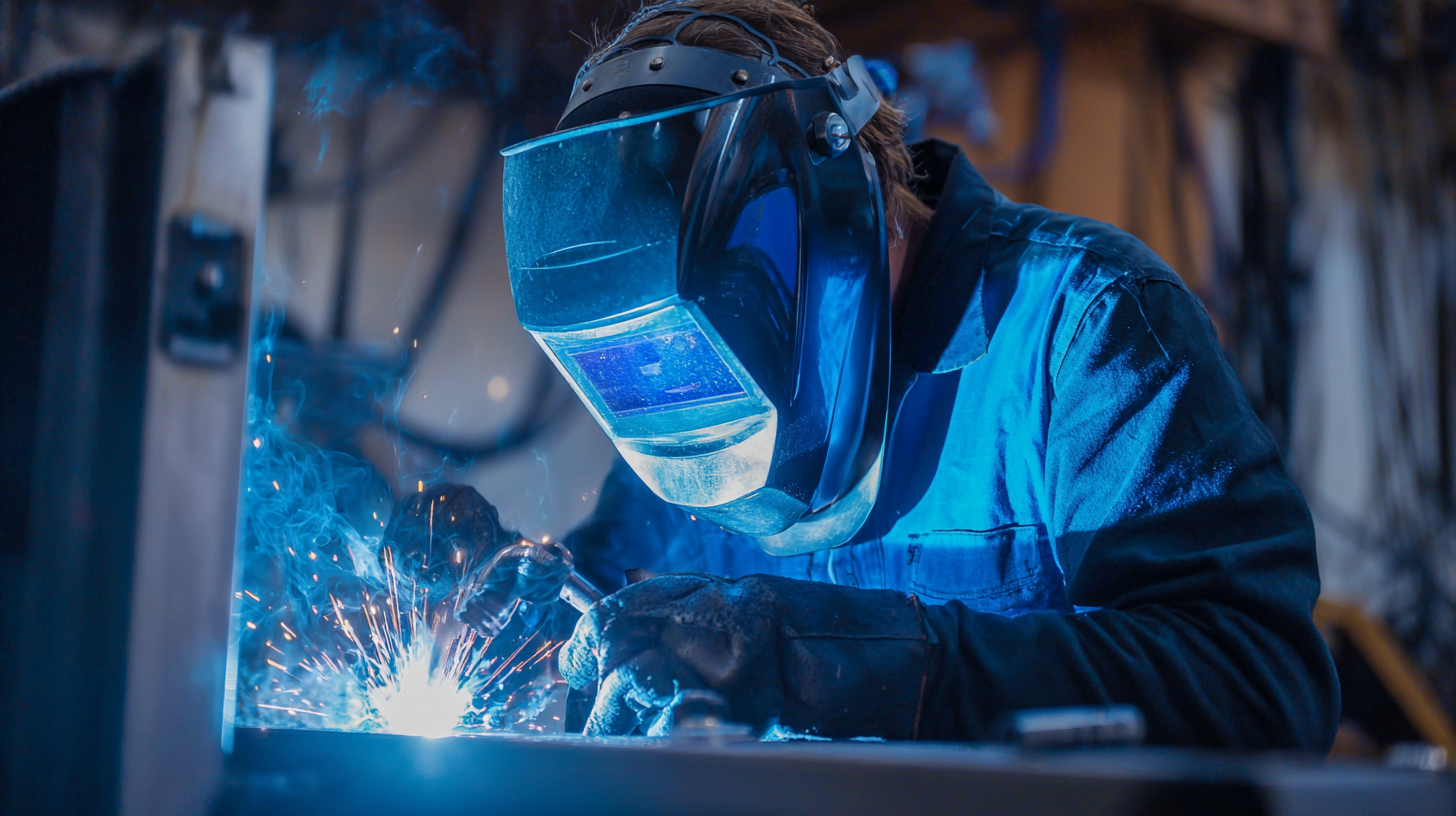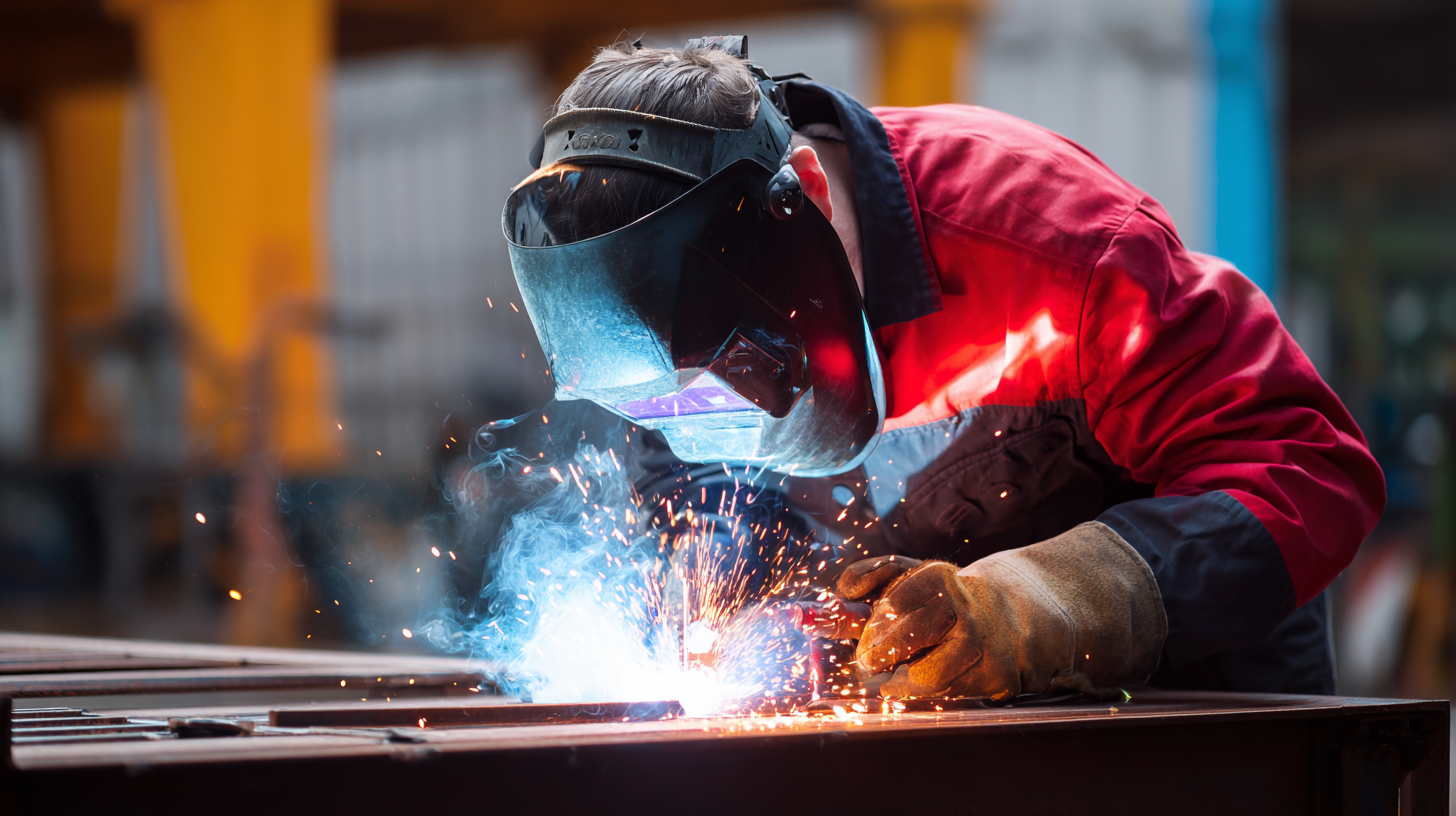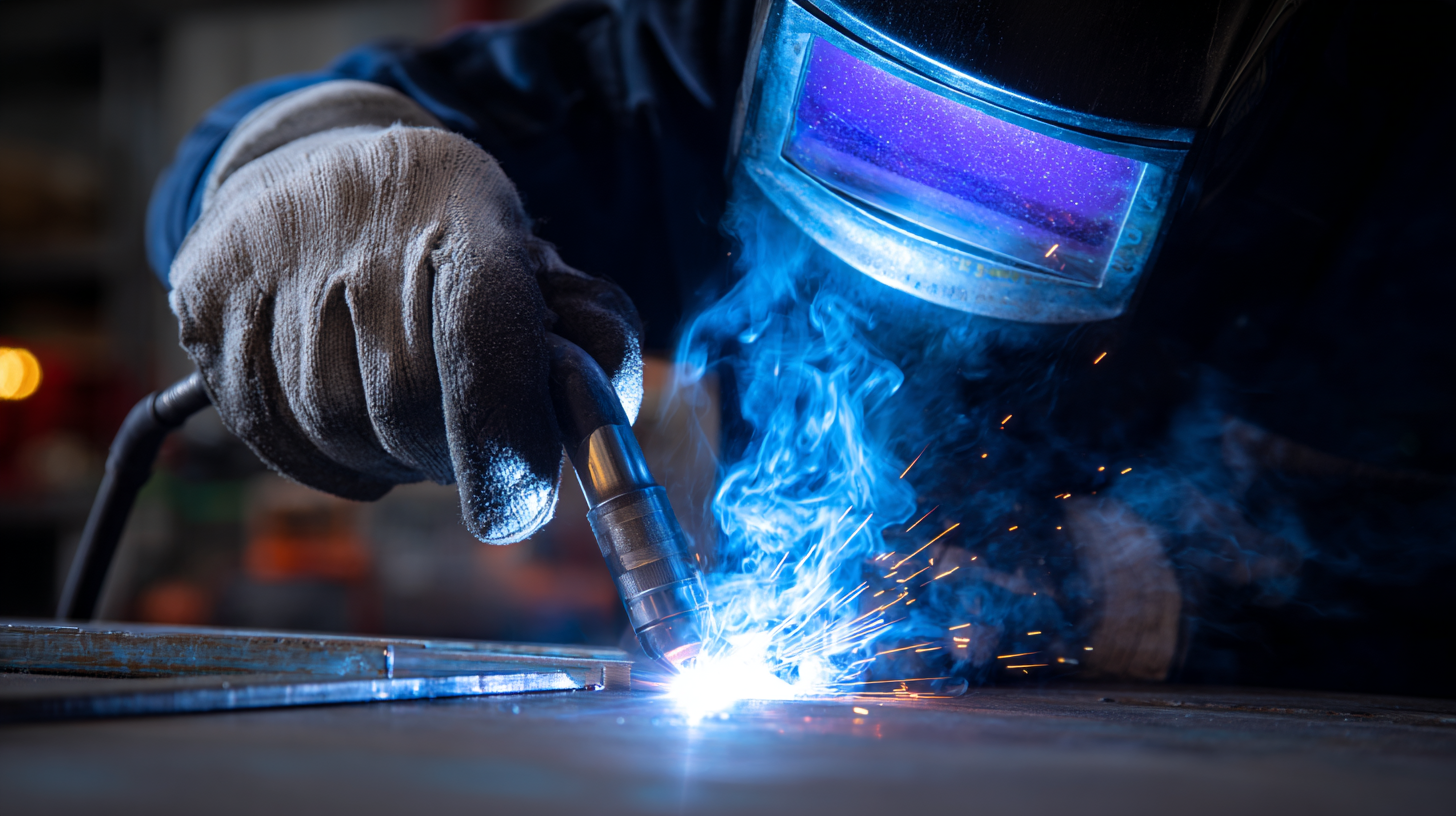As the demand for high-quality welding solutions continues to rise globally, the search for the best Mig Welding Machine has never been more critical. According to recent industry reports, the global welding equipment market is projected to reach USD 21.54 billion by 2025, with a significant portion attributed to the increasing popularity of MIG welding due to its efficiency and ease of use. This surge is driven by advancements in technology and a growing emphasis on automation across various industries.

However, with numerous options flooding the market, it becomes imperative for buyers to explore alternatives that can offer similar or superior performance. In this blog, we will delve into the top alternatives to traditional Mig Welding Machines that cater to diverse needs and budgets, ensuring that global buyers can make informed decisions in this dynamic landscape.
When considering alternatives to the best MIG welding machines, it’s crucial to identify the top features that can meet the diverse needs of global buyers. One of the primary aspects to look for is the power output. A versatile MIG welding machine should offer adjustable amperage to accommodate various material thicknesses, ensuring optimal performance for both light and heavy-duty applications. Additionally, a dual voltage capability is invaluable, allowing users to switch between voltages depending on the job requirements.
Another key feature is the ease of use, which includes user-friendly controls and an intuitive interface. For beginners, machines with automatic settings can simplify the welding process, enabling a smoother learning curve. Moreover, portability is essential for professionals who work on multiple sites. Lightweight, compact designs with integrated storage for welding accessories can enhance convenience and efficiency. Finally, consider the availability of replacement parts and customer support, as reliable service and easy access to components can significantly extend the lifespan of the machine and ensure uninterrupted productivity.
When considering alternatives to the best MIG welding machines, it's essential to analyze their cost-effectiveness. MIG welding, known for its speed and portability, often represents a significant investment. However, alternatives like TIG welding and Flux-Cored Arc Welding (FCAW) provide distinct advantages. For instance, while MIG welding excels in speed, TIG offers superior control for intricate tasks.
In terms of cost distribution, studies show that while initial equipment costs may be higher for TIG, the reduction in filler material and lower labor costs can lead to overall savings. Similarly, FCAW, with its capability to operate without a shielding gas, can also be more economical for certain applications. Understanding these nuances can help buyers make informed decisions that align with their specific welding needs.
**Tips:** When comparing welding machines, make a detailed list of your project requirements, including material types and thicknesses. Additionally, consider long-term operational costs, not just the upfront price. This approach ensures you choose a welding solution that remains efficient and economically viable over time.
| Alternative Model | Input Voltage (V) | Max Output (A) | Weight (lbs) | Price ($) | Warranty (Years) |
|---|---|---|---|---|---|
| Model A | 230V | 200A | 45 | 599 | 3 |
| Model B | 120V/240V | 180A | 38 | 499 | 2 |
| Model C | 240V | 250A | 50 | 699 | 4 |
| Model D | 230V | 160A | 37 | 399 | 2 |
| Model E | 120V | 140A | 28 | 299 | 1 |
When evaluating alternatives to the best MIG welding machines, performance metrics such as efficiency and output become crucial for global buyers. Recent industry reports, including the “Welding Equipment Market Analysis 2023” by Machina Research, indicate that high-efficiency MIG welders can optimize gas usage by up to 30%, thereby significantly reducing operational costs. As electric consumption remains a pivotal cost factor, MIG welders with inverter technology have demonstrated up to 20% greater energy efficiency compared to traditional transformer-based models.
Moreover, the output capability of leading MIG welding alternatives is a testament to their suitability for diverse applications. According to the "2023 Global Welding Trends" report by IHS Markit, machines boasting higher duty cycles—around 60% to 100%—enable operators to work continuously without extended downtime. This capability is instrumental for industrial settings where time and productivity directly impact profitability. Brands like Lincoln Electric and Miller Electric are noted for their advanced inverter technologies that offer superior arc stability, thereby delivering cleaner welds with less spatter, which is vital for maintaining overall work quality in competitive markets.

When it comes to MIG welding equipment, customer reviews are an invaluable resource for potential buyers. They offer insights into the user experience, helping newcomers navigate the plethora of products available in the market. Many users report satisfaction with their choices when they consider factors like ease of use, portability, and the versatility of the machines. It's essential for buyers to sift through these reviews to identify trends that can guide their purchasing decisions, especially when looking for alternatives to premium options.
**Tips:** Always look for reviews that mention specific projects the users have undertaken with the machine. This can provide clarity on whether a particular MIG welder meets your specific welding needs. Additionally, consider reaching out to community forums or local welding clubs for firsthand experiences and recommendations from fellow welders.
Another critical aspect highlighted in user feedback is the importance of customer support from the manufacturer. A responsive company can greatly enhance the experience, assisting with setup, troubleshooting, and providing essential maintenance tips. Buyers should prioritize brands known for their strong customer service reputation.
**Tips:** Research warranty options and customer support availability before making a purchase. A good warranty can save you costs in the long run and ensure peace of mind as you embark on your welding projects.

The welding industry is undergoing a significant transformation driven by emerging technologies. According to a recent report by MarketsandMarkets, the global welding equipment market is projected to reach $30.38 billion by 2027, growing at a CAGR of 6.9%. This growth is largely fueled by innovations in automation, robotics, and advanced materials, which are enhancing the efficiency and precision of welding tasks.
Companies are increasingly adopting MIG welding machines equipped with smart technology that includes real-time monitoring and feedback systems. For instance, newer models are integrating IoT capabilities, allowing operators to track performance metrics remotely. This transition not only minimizes downtime but also boosts productivity by enabling predictive maintenance. Additionally, advancements in inverter technology are producing lighter and more energy-efficient machines, making them increasingly suitable for a variety of applications—from heavy manufacturing to intricate craftsmanship.
Moreover, as the industry's focus shifts towards sustainability, eco-friendly welding solutions that minimize emissions and energy consumption are becoming more prevalent. The World Economic Forum highlights that the implementation of green technologies in the welding sector can reduce operational costs by up to 20%. Such innovations are making a substantial impact on global markets, providing buyers with smarter, greener, and more efficient options in welding machinery.
